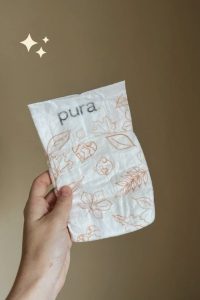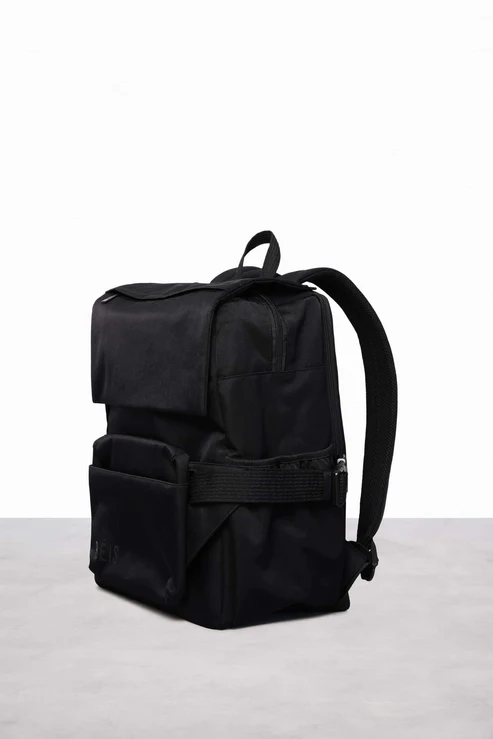Natural diapers are gaining popularity among parents seeking eco-friendly and potentially healthier diapering solutions for their babies. Unlike conventional disposable diapers, diapers are crafted with materials derived from nature, aiming to minimize environmental impact and potential skin irritation. Whether you’re a seasoned parent or a soon-to-be mom or dad, this comprehensive guide will delve into the world of natural diaper, exploring their benefits, drawbacks, and various types available.
Understanding the Why Behind Natural Diapers
Several factors contribute to the rise of natural diaper. Here are some key reasons why parents are opting for this diaper choice:
Environmental Concerns:
Disposable diapers contribute significantly to landfill waste. Natural diaper, often made with biodegradable materials, aims to reduce this environmental footprint.
Potential for Fewer Blowouts:
Some parents find natural diaper offers better leak protection due to their absorbent qualities. This can lead to fewer diaper changes and less mess.
Gentler on Skin:
Natural diapers are typically free from harsh chemicals, fragrances, and lotions found in some conventional diapers. This may be appealing to parents seeking to minimize the risk of diaper rash for their babies.
Exploring the Different Types of Natural Diapers
The world of natural diaper offers a variety of options to suit your needs and preferences. Here’s a closer look at some popular types:
Biodegradable Disposable Diapers:
These diapers are crafted from plant-based materials like bamboo or corn, aiming to decompose quicker than traditional disposable diapers.
Cloth Diapers:
Cloth diapers are a reusable option, made from natural fabrics like cotton or hemp. They come in various styles, including prefolds, fitted diapers, and all-in-one diapers.
Hybrid Diapers:
Hybrid diapers combine features of both disposable and cloth diapers. They often have a disposable insert and a reusable cover.
Choosing the Right Natural Diaper:
The ideal natural diaper depends on your lifestyle, budget, and baby’s needs. Consider factors like absorbency, ease of use, and cost when making your decision.

Weighing the Pros and Cons of Natural Diaper
Like any parenting choice, natural diapers come with both advantages and disadvantages. Let’s explore both sides of the coin:
Pros:
Eco-Friendly:
Natural diaper may have a lower environmental impact than conventional disposable diapers.
Gentler on Skin:
The absence of harsh chemicals may reduce the risk of diaper rash.
Leak Protection:
Some natural diapers offer good absorbency and leak protection.
Cons:
Availability and Cost:
Natural diaper may be less readily available and more expensive than conventional disposable diapers.
Leakage Concerns:
Some parents report experiencing leaks with certain natural diaper brands.
Increased Laundry (Cloth Diapers):
Cloth diapers require washing and can add to laundry loads.
Making Eco-Conscious Choices Beyond Diapers
While natural diaper can be a step towards a more eco-friendly diapering routine, there are additional ways to minimize environmental impact:
Cloth Wipes:
Consider using reusable cloth wipes instead of disposable wipes to further reduce waste.
Diaper Sprayer:
A diaper sprayer attached to your toilet can help clean cloth diapers with minimal water usage.
Safe Disposal:
Research proper disposal methods for disposable natural diaper, as some may require special composting facilities.
The Bottom Line on Natural Diaper
Natural diaper offers an eco-conscious and potentially gentle diapering option for your baby. By weighing the pros and cons, exploring different types, and considering eco-friendly practices alongside diaper choice, you can make informed decisions about what works best for you, your baby, and the planet.
Putting it All Together: Choosing Your Natural Diapers Journey
There’s no one-size-fits-all answer to choosing natural diaper. The best option depends on your individual priorities, lifestyle, and of course, your baby’s needs. Here are some tips to guide you:
Start Small:
If you’re new to natural diaper, consider trying a small pack of a disposable biodegradable brand or a trial package of cloth diapers. This allows you to see how they work for you and your baby before committing.
Talk to Other Parents:
Connect with friends, family, or online communities of parents who use natural diaper. Their experiences and recommendations can be valuable.
Find a Routine that Works:
Whether you choose cloth diapers, disposable natural diaper, or a hybrid system, establish a routine that works for you. This may involve setting aside laundry time for cloth diapers or planning diaper changes for disposable options.
Ultimately, the decision to use natural diaper is a personal one. By weighing the information presented here and considering your baby’s comfort and your own preferences, you can embark on a natural diapering journey that works best for your family. Remember, the most important thing is to keep your baby clean, comfortable, and happy.
Beyond the Basics: Exploring Additional Considerations with Natural Diapers
While the core decision about natural diaper revolves around environmental impact and potential skin benefits for your baby, there are other factors to explore to make an informed choice. Here are some additional considerations:
Cost:
Natural diaper, especially cloth diapers, can have a higher upfront cost than traditional disposable diapers. However, cloth diapers are reusable, and the cost savings over time can be significant, especially if you plan on having multiple children.
Convenience:
Disposable natural diaper offers similar convenience to traditional disposable diapers. Cloth diapers require more laundry and planning, but many parents find the environmental benefits and potential cost savings outweigh the additional effort.
Performance:
Natural diapers are constantly evolving, and their absorbency and leak protection capabilities are improving. Look for reviews from other parents to get insights on the performance of specific brands.
Availability:
Natural diaper may not be available at all conventional stores. You may need to order them online or find a specialty retailer.
Natural Diapers: A Part of a Broader Eco-Conscious Routine
Choosing natural diapers is a step towards a more eco-friendly diapering routine. Here are some additional ways to reduce your environmental impact:
Minimalist Diaper Bag:
Pack only the essentials in your diaper bag. This can help you avoid unnecessary waste from diaper wipes, creams, and disposable changing mats.
Second-Hand Clothing:
Babies grow out of clothes quickly. Consider buying second-hand clothes or borrowing from friends and family to minimize waste associated with new clothing.
Soy-Based or Recycled Content Products:
When choosing other baby products, look for those made with soy-based ink or recycled materials.
By making small changes throughout your baby’s routine, you can create a more eco-conscious approach to diapering and beyond.
Conclusion: Natural Diaper – An Option Worth Exploring
Natural diapers offer a compelling choice for parents who prioritize eco-friendly practices and want to explore potentially gentler options for their baby’s skin. Remember, there’s no single “right” answer when it comes to diapering. By weighing the pros and cons, exploring different choices, and considering broader eco-conscious practices, you can make informed decisions on the diapering journey that best suits your family’s needs.






